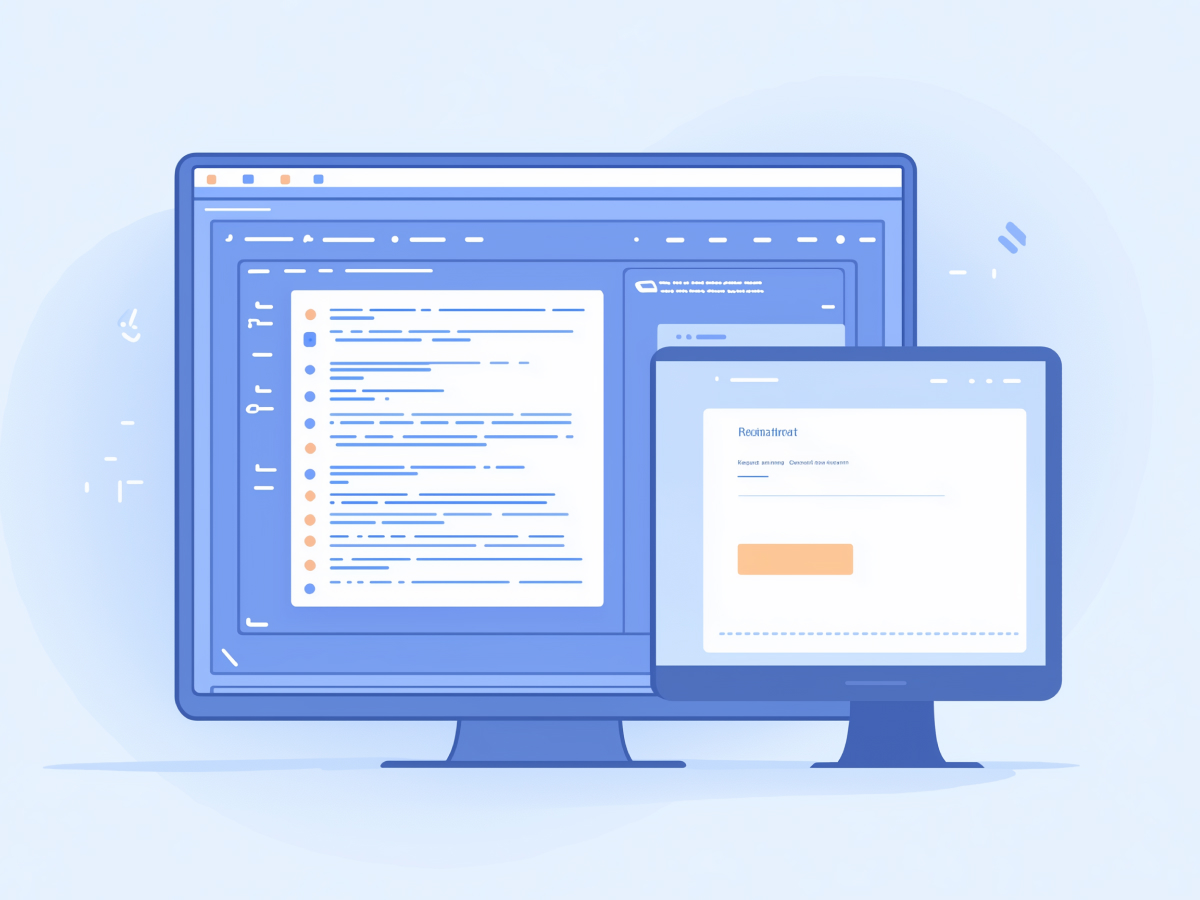AI supports rapid prototyping and accelerated development
Speed matters. When you want to move fast and cut latency between idea and execution, artificial intelligence is beginning to make that possible, at scale.
In the development of “Vaani,” a universal, speech-to-text desktop application, the process began with a simple voice-driven prompt. That prompt, “build a lightweight offline speech-to-text app for Windows”, was enough. The AI, Claude Sonnet 3.7, generated a functional application structure in seconds. It handled user interface design, hotkey functionality, offline speech recognition using Vosk, and even system tray integration. These are all the things developers typically spend hours, sometimes days, building manually.
That translation of plain-language instruction into real software is a real shift. You go from zero code to a working baseline incredibly fast. In this case, the full prototype was built in under 15 hours. That’s dev speed that beats most agile teams on a two-week sprint, and it doesn’t require you to sacrifice privacy or build everything in the cloud. It runs offline. It works on any app. It was private from day one.
So, if you’re running a business where speed is a competitive edge, this approach deserves attention. It’s about giving developers the tools that remove friction at the start. Less time setting up means more time refining what matters.
Reactive, AI-centered iteration loop in development
Once the foundation is there, the way you build changes. You stop working step by step through a roadmap and start reacting to signals, immediate feedback that leads directly to fixes. That’s what vibe coding enables.
The development loop that followed was built on natural language interactions. Whenever a bug appeared or a new feature was needed, the developer explained the issue and the AI responded with code. Sometimes it created new modules. Sometimes it rewrote logic. Each cycle, feature request, code gen, test, fix, was fast. Sometimes minutes. Sometimes less.
For example, the app needed hotword detection. Rather than designing a full subsystem, a simple request to the AI kicked off the loop. The developer described what wasn’t working. The AI provided updated logic. The developer tested it, then asked for adjustments based on the result. This wasn’t agile in theory. It was agile in operation, real iteration, no overhead.
This model works, but it’s reactive. You’re not laying out perfect design documentation ahead of time. That’s fine, until it’s not. Complexity compounds quickly, especially across threads and stateful UI components. In this project, classic UI concurrency issues surfaced, like deadlocks and inaccessible shared resources. The AI offered solutions, but it took several loops to arrive at one that worked consistently.
For decision-makers, you need a developer in the loop who’s able to guide the AI, test thoroughly, and understand when it’s veering off course. It’s still software engineering, just with a different interface. And it gets results, fast.
AI’s tendency to over-engineer solutions
The AI is fast. That’s the upside. But speed can come with unnecessary complexity, especially if you take the first solution it gives you.
In building Vaani, the AI, Claude Sonnet 3.7, consistently favored generic, heavy implementations where simple logic would have worked better. It offered a fully modular buffering system for handling voice transcription output. It worked, sure. But it was bloated. When questioned with a practical lens, why not just detect pauses in speech? The AI agreed and delivered a far simpler, pragmatic solution. The fix ran cleanly, used fewer resources, and was easier to maintain.
This pattern repeated across the build. When implementing audio calibration, Claude attempted to persist calibration settings for every possible recording device. But in reality, most users stick with one mic. When Gemini 2.5 Pro, used here as a code reviewer, flagged the inefficiency, the developer pushed the AI to simplify. The same functionality, with less noise and fewer assumptions, delivered a better result.
Here’s what executives need to take from this: the AI isn’t lazy, it overshoots. It wants to solve for everything. You need a developer with experience and discipline to rein that in. More code doesn’t mean better code. In some cases, minimal wins. If you don’t control for complexity early, you risk paying for it later in maintainability and performance overhead.
A performant product is often built on clarity. The AI won’t always know where to cut. That decision still belongs to people who understand usage patterns, constraints, and priorities.
Emergent versus planned architecture in vibe coding
When you let AI drive initial implementation, architecture doesn’t come first, it evolves. That’s not a flaw. But it’s something you need to manage.
Vaani is a case in point. The original goal was clear: create a minimal, private, universal speech-to-text app. Rather than laying out a detailed system at the start, the developer focused on building and responding to issues as they appeared. The result was fast progress. Features were added continuously: hotkey activation, audio capture, speech transcription, UI settings, and packaging. But these were guided by utility, instead of a strict framework.
As bugs appeared, like shared state collisions or threading glitches, the architecture had to evolve. New concurrency controls were introduced. The UI layer moved from Tkinter to PySide6 for better integration and threading support. Modularization wasn’t a day-one design decision, it became a necessity when complexity caught up to iteration speed.
For business leaders, there’s a choice here. You can adopt AI-based workflows that give you speed upfront, but you must pair them with structured refinement later. This isn’t something to leave open-ended. There’s a threshold in every product’s lifecycle where operating without a clear architecture starts to become friction, not freedom. That means budgeting time for stabilization, modularizing the codebase, optimizing components, documenting behavior, and enforcing constraints.
Emergent architecture works, until you need scalability, maintainability, and onboarding. Then structure wins. Know when to pivot, and make sure your teams do too.
AI can be a complement for developer expertise
AI is powerful, but it’s not a complete solution. It can generate code, explain logic, and correct bugs. What it can’t do, at least not yet, is match a developer’s ability to recognize context, evaluate practicality, and anticipate impact.
Throughout the development of Vaani, AI did most of the heavy lifting. Claude Sonnet 3.7 wrote nearly all the early code, end-to-end functions, interface logic, concurrency mechanisms. But it wasn’t on autopilot. The developer’s role shifted from writing every line to acting as a guide: reviewing AI submissions, pushing back on over-complication, correcting misaligned assumptions, and steering toward more appropriate trade-offs. That’s where the real value is.
This working model made it clear, AI isn’t replacing engineers. It’s extending them. A skilled developer now moves faster, delivers broader functionality, and skips repetitive work. But it’s that same developer who ensures the outcome is viable, secure, and aligned with both the problem and the user.
For executives, this changes how teams should be structured. The vision shouldn’t be to reduce headcount. It’s to enhance capability. You can produce more with leaner teams, but only if the people involved are equipped to lead AI instead of relying on it. That means hiring engineers with system-level thinking, communication clarity, and judgment under pressure,.
In the end, code written by AI still needs to be read, maintained, and optimized.
Potential for shallow understanding through over-reliance on AI-generated fixes
Speed has a cost, especially when it bypasses deep understanding. When AI steps in to fix problems, developers can get lazy. Not intentionally, but functionally. Issues get resolved, but the why behind them goes unexplored.
In the Vaani project, subtle bugs surfaced around race conditions, UI responsiveness, and threading stability. Claude addressed most of them quickly. You drop in an error message, it gives you a patch. But unless the developer asked detailed follow-ups, the AI moved on. This meant fixes were implemented without always explaining root causes. The learning didn’t automatically happen unless it was explicitly requested.
This matters. If the developer keeps taking patches without demanding explanations, real understanding starts to erode. They’ll miss the patterns. Team performance suffers. Worst case, the same issues cycle back under new configurations or scale.
For companies investing in AI-assisted development, this isn’t a small concern. You need to design workflows where technical depth is preserved. Train your teams to interrogate AI responses. Ask for context. Review edge cases. And make sure they’re learning.
Transition from vibe coding to structured, production-ready engineering
AI can take your project from concept to working code fast. But when it’s time to release, that early speed hits a wall unless structure steps in. That’s exactly what happened with Vaani.
The first iterations were built without a rigid plan. The developer relied on Claude Sonnet 3.7 to generate most of the application through rapid cycles. That worked, for a while. Features came online quickly. Bugs were resolved reactively. But once the project approached a public release, a shift was required. Code needed to be modular. Architecture had to be clear. Testing coverage had to improve. Documentation was no longer optional.
The developer brought in Google Gemini 2.5 Pro to review structure and efficiency. The process moved from creative iteration to deliberate engineering. That included organizing separate modules, defining reusable components, introducing better threading discipline, and preparing the repository for an open-source audience.
This is the part C-suite leadership needs to plan for, early AI acceleration is only phase one. If you’re putting something into production, or releasing code into the wild, cleanup becomes mandatory. Budget for it. Staff for it. And make sure your developers aren’t stuck supporting a fragile, hard-to-navigate codebase that scaled too fast without guardrails.
Speed wins early. Finish quality wins long-term. You’re responsible for ensuring both exist.
Benefits and risks of AI-assisted vibe coding
AI-assisted development brings clear advantages up front, and real challenges if unmanaged. The key is understanding the trade-offs and controlling them early.
On the benefits side: prototyping becomes faster. The friction of scaffolding, wiring up common libraries, or writing repetitive boilerplate is gone. In Vaani, the developer was able to spin up a multi-featured desktop app, locally run and offline-capable, in less than a day. That’s real output.
The AI also handled multi-threaded tasks, integrated packages like PySide6, managed UI event loops, and debugged concurrency flaws. Without AI assistance, these tasks take significant time and expertise. AI lightens that load, and that’s a clear productivity gain.
But then come the trade-offs. Bugs often appear in corners the AI hadn’t tested, especially related to state or timing logic. Codebases grow dense with automated logic, which can make them harder to understand or scale. And yes, there’s a risk to core skill erosion if developers become overly dependent.
Most critically, AI focuses on what it’s asked to do. It doesn’t address performance, security, or operational safeguards unless explicitly prompted. In early-phase development, these often get ignored.
For organizations adopting this model, executive attention should be focused in two areas: (1) empowering developers to challenge the AI’s suggestions, and (2) enforcing practices that catch what AI misses, error handling, performance constraints, and architectural sanity. AI speeds things up. Your teams still define where it’s safe to go.
Strategic developer involvement is key to unlocking AI’s full potential
AI doesn’t lead; it responds. Its value depends on the quality of input and what happens after the output. That’s why developer leadership is non-negotiable if you want consistent results.
During the development of Vaani, the AI (Claude Sonnet 3.7) handled most of the implementation, but the quality only held over time because the developer actively shaped the process. It wasn’t just prompting. It was auditing the AI’s code, filtering complexity, and demanding improvements when solutions were inefficient or impractical. Gemini 2.5 Pro was also introduced later in the cycle for peer review, essentially bringing in another AI as a second perspective, but even then, a human made the decisions.
That developer acted as a complexity filter. When the AI proposed overly generalized workflows or edge-case driven abstractions, the developer pushed back and asked for leaner, more targeted approaches. The result was a solution that matched the actual use case, not the maximum possible scope imagined by the AI.
If you’re running a team or shaping strategy, this should reset expectations. AI doesn’t eliminate the need for technical judgment, it increases the need. That means hiring engineers who think clearly, know how to test design constraints, and don’t default to acceptance. It also means assigning developers to lead AI usage in a hands-on way, not treating it as a fully autonomous tool.
You get leverage from AI, but only if your people know where to apply pressure.
Vibe coding redefines developer roles and workflows
AI is shifting how software gets built, and that changes the role of the developer. Instead of writing every line of logic, developers using vibe coding spend more time deciding what’s worth building, when to simplify, and how to validate AI-generated solutions.
In Vaani’s development, the human didn’t micromanage. The AI wrote most of the early code. But the developer remained fully in control of architecture, feature prioritization, and testing. As the software matured, the developer also led refactoring decisions, enforced module separation, and improved long-term maintainability, all critical for open-source readiness.
That’s the shift. Developers aren’t just writing syntax, they’re evaluating system behavior, guiding implementation choices, refining designs from vague prompts to functional systems. And they’re doing this faster and more flexibly than standard development pipelines allow.
If you’re leading a product or engineering org, this requires a mindset update. Don’t look only at raw coding ability. Focus on developers who can synthesize requirements, interrogate AI outputs, and maintain architectural discipline. The return is significant. Projects move faster, less time is spent on redundant code, and teams can execute with fewer resources at higher velocity.
AI doesn’t replace skilled engineers. It gives them broader reach. What matters now is who’s guiding that reach, and how well they’re doing it.
Final thoughts
AI is changing how software is built. You can translate ideas into working code in hours. You can eliminate the drag of boilerplate, setup, and even a lot of mid-tier complexity. But speed without structure is just early acceleration. What matters is how you finish.
For leaders, this shift demands more than just adopting new tools. It means redefining how your teams operate, how they think, and where they provide value. Developers are being asked to lead differently, guiding AI, validating its output, filtering unnecessary complexity, and enforcing the principles that actually keep systems reliable.
If you’re investing in AI to cut dev costs, you’re missing the deeper gain. The real advantage is leverage. Smaller teams moving faster, delivering more, and staying aligned with business needs in tighter cycles. But they still need structure. They still need judgment. And they still need room to question the machine.
AI isn’t solving software on its own. It’s amplifying the people who know what good software really looks like. Back those people, train them well, and give them the space to lead. That’s where the returns start to scale.





